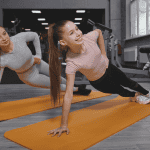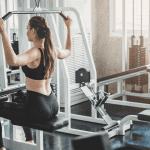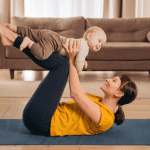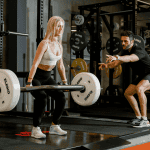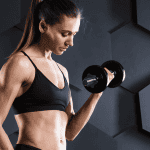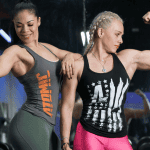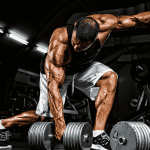Ever wonder if arm workouts are even worth it?
Like, if you’re not trying to be ripped, do you really need them?
Turns out, yes. (just not in the way most people think)
You see, you don’t have to go hard or spend hours lifting heavy stuff. Heck, you don’t even need your own home gym. A few smart moves (done regularly) can make your arms stronger and more steady in everyday life.
This guide keeps it simple. You’ll learn a few solid moves that work, plus full workouts you can do at home even if all you’ve got is a pair of light dumbbells or two water bottles.
If you want stronger, more defined arms without the stress, keep going.
But, why do you need to train your biceps and triceps?
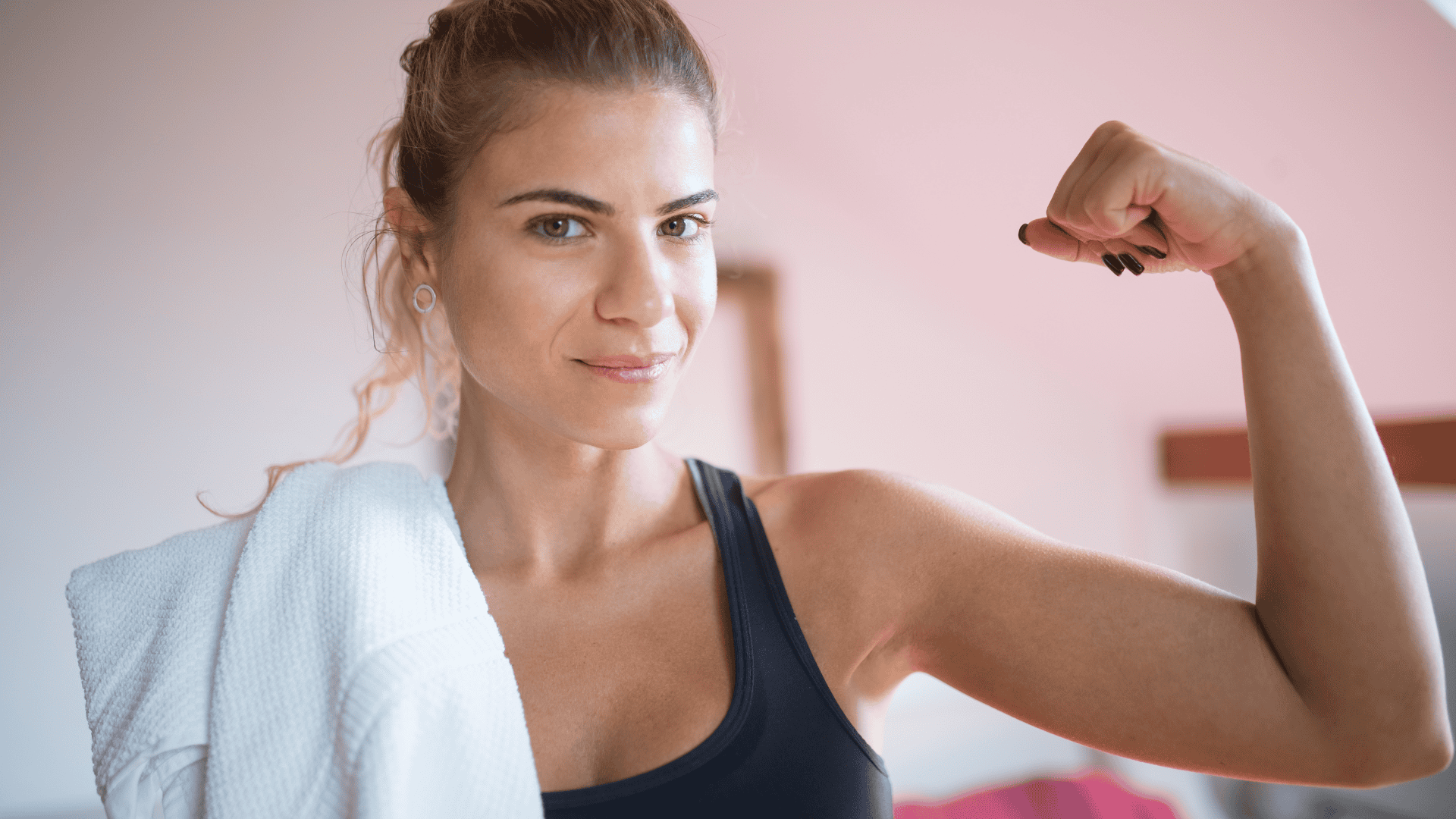
Some people think arm workouts are only for showing off muscles in the mirror. But these muscles help you do a lot more than that.
Your biceps and triceps are what help you lift, carry, pull, and push things. We’re talking about everyday stuff like moving groceries, pulling open a stuck door, or lifting a suitcase off the floor.
When these muscles are weak, simple tasks take more effort than they should.
But when they’re stronger, moving through your day gets a whole lot easier. You won’t be struggling to carry laundry or wondering why your arms get tired halfway through doing your hair.
Training your arms also helps with posture.
When your arms are weak, your shoulders tend to round forward. That can lead to neck tension and tightness in your upper back. But when your upper body is stronger, your shoulders stay where they should.
And just so we’re clear: lifting weights will not turn you into the Hulk (unless that’s the vibe you’re going for, in which case, carry on). 😝
What it actually does is build lean muscle.
That’s the kind of muscle that gives your arms shape, helps with strength, and makes daily stuff easier to manage.
So if you’ve been skipping arm workouts because you’re worried about getting too big, go ahead and toss that thought out.
Training your biceps and triceps won’t bulk you up, but it will help you move better, stand taller, and carry your iced coffee, laptop bag, and emotional baggage (kidding… mostly) all at once.
5 Arm-Toning Moves That Actually Work
Not sure where to start when it comes to training your arms? Don’t worry, most people don’t. There’s so much info out there, it’s easy to feel stuck or overwhelmed.
Here are five beginner-friendly exercises that target your biceps and triceps. You can use light dumbbells if you have them. Or grab two water bottles or canned goods. Whatever you’ve got works.
Each move is simple, and together they’ll give your arms a full workout without the stress.
1. Bicep Curls

What it works: Biceps (front of your upper arm)
How to do it:
- Stand tall with your feet hip-width apart.
- Hold a dumbbell in each hand with your arms by your sides and palms facing forward.
- Slowly bend your elbows to bring the weights up toward your shoulders.
- Pause for a second at the top, then lower them back down with control.
Pro tip: Don’t swing. Keep your elbows close to your body and move slow. Let your biceps do the work (not momentum).
2. Tricep Kickbacks

What it works: Triceps (back of your upper arm)
How to do it:
- Stand with your knees slightly bent and lean forward a bit at your waist.
- Hold a weight in each hand and bend your elbows to 90 degrees.
- Keep your elbows in place and straighten your arms back until they’re fully extended.
- Pause, then return to the starting position.
Pro tip: Pretend your upper arms are glued to your ribs. Only your lower arms should move (like a little robot elbow hinge).
3. Hammer Curls

What it works: Biceps and forearms
How to do it:
- Stand up straight and hold a dumbbell in each hand with your palms facing your sides (like holding a hammer).
- Curl the weights up toward your shoulders without twisting your wrists.
- Pause, then lower slowly.
Pro tip: If regular curls feel too easy, hammer curls add a bit of a challenge—especially for your grip and lower arms.
4. Overhead Tricep Extensions

What it works: Triceps
How to do it:
- Hold one dumbbell with both hands and raise it overhead.
- Keep your elbows close to your ears.
- Slowly lower the weight behind your head by bending your elbows.
- Then press it back up to the top.
Pro tip: Make sure your core is tight and your back isn’t arching. This keeps the work in your arms, not your lower back.
5. Arm Pulses
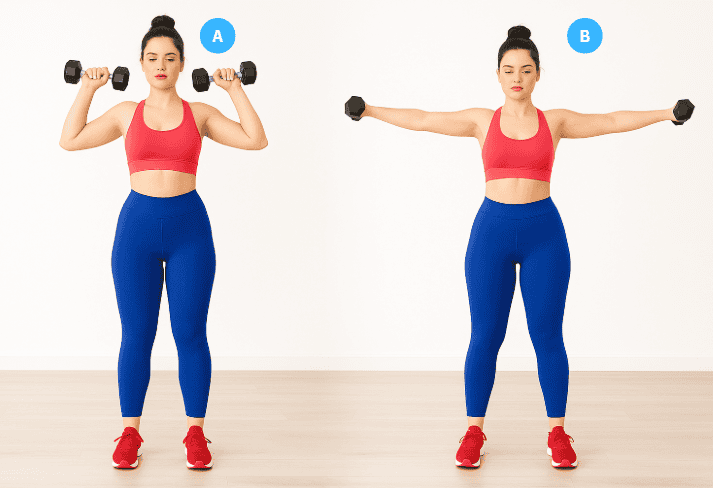
What it works: Shoulders, arms, and endurance (great finisher)
How to do it:
- Stand tall with your arms extended straight out to your sides, palms facing down.
- Raise and lower your arms just a few inches—tiny, quick movements.
- Keep pulsing for 30 to 60 seconds.
Pro tip: These look easy. They’re not. But they’re perfect when you want a no-weight burn to finish your arm day strong.
You can mix and match these five moves to build your own routine. Or just keep reading—we’ll give you full workout plans next.
3 Simple Arm Workouts You Can Actually Stick With
You don’t need a gym pass(or even gym clothes) to get a solid arm workout in. Honestly, you can do these right in your bedroom, living room, or that weird empty space between the couch and the coffee table.
Here are three beginner-friendly arm workouts that don’t take a lot of time or equipment. Pick the one that fits your mood, your schedule, or what you’ve got nearby.
Workout A: Push & Pull Basics
Type: Beginner Dumbbell Circuit
Time Needed: About 20 minutes
How to do it: Do each move for the number of reps listed below. Rest for 1 minute after each round. Repeat the full circuit 2 or 3 times.
- 12 Bicep Curls
- 12 Tricep Kickbacks
- 12 Hammer Curls
- 10 Overhead Tricep Extensions
- 30 seconds of Arm Pulses
Why it works:
This combo covers the two main jobs your arms do—pushing and pulling. It helps train both biceps and triceps so your strength stays balanced. Using light weights also gives you more control, which helps tone your arms without overloading your joints.
Workout B: Arm Workout Without Weights
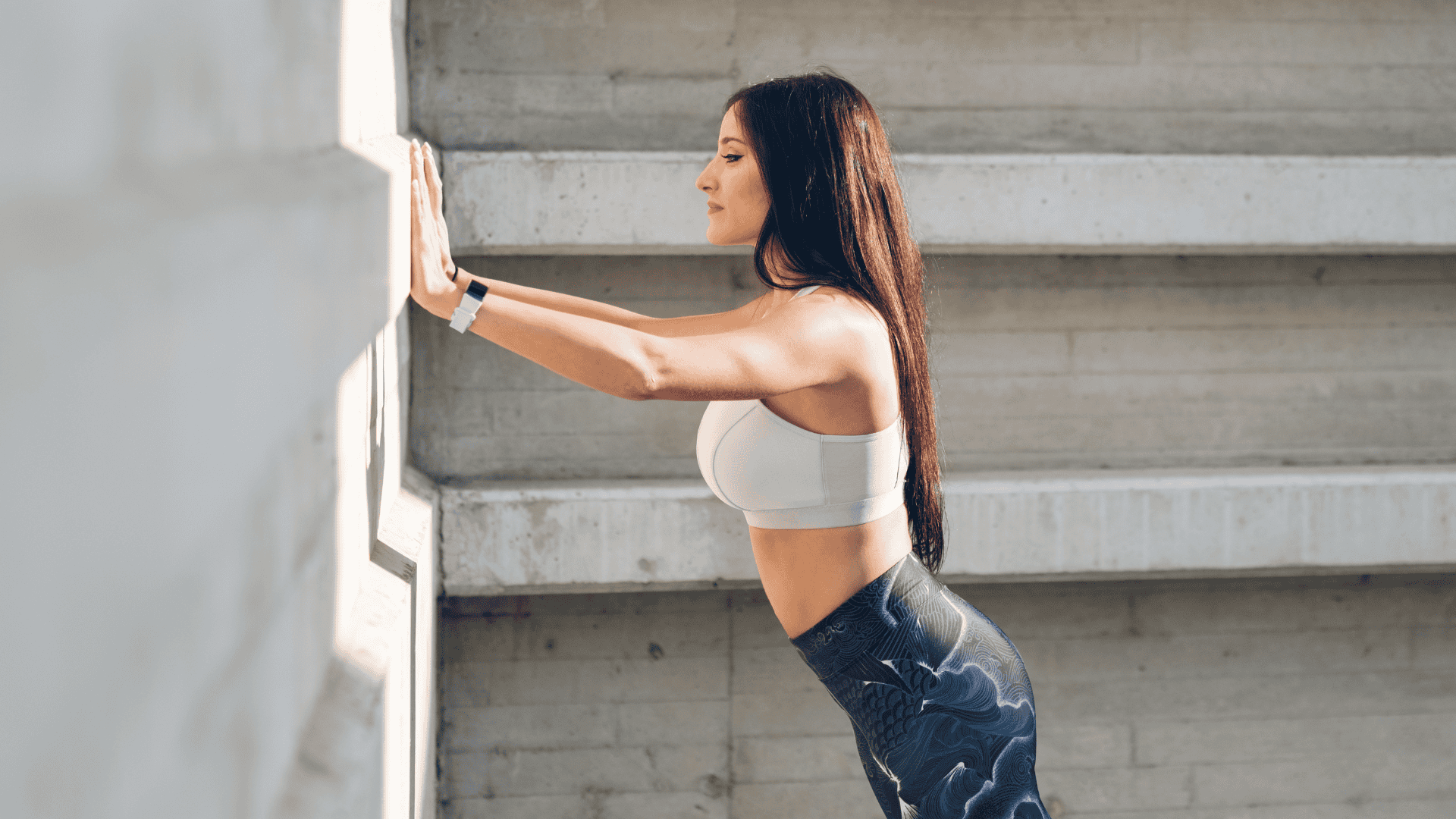
Type: Bodyweight Arm Toner
Time Needed: About 15–18 minutes
How to do it:
Do each move for 30 seconds. Rest for 30 seconds in between. Repeat the whole thing twice.
- Arm Pulses
- Wall Push-Ups
- Arm Circles (forward)
- Arm Circles (backward)
- Tricep Dips (use a chair or couch)
Why it works:
This one’s great for the days when you don’t want to pick up a single thing. Your own body does all the work here. It’s gentle on your joints but still activates your arms in all the right places.
(Bonus: no excuses when you’re traveling or just don’t feel like digging for your dumbbells.)
Workout C: Quick Burn (Under 15 Minutes)
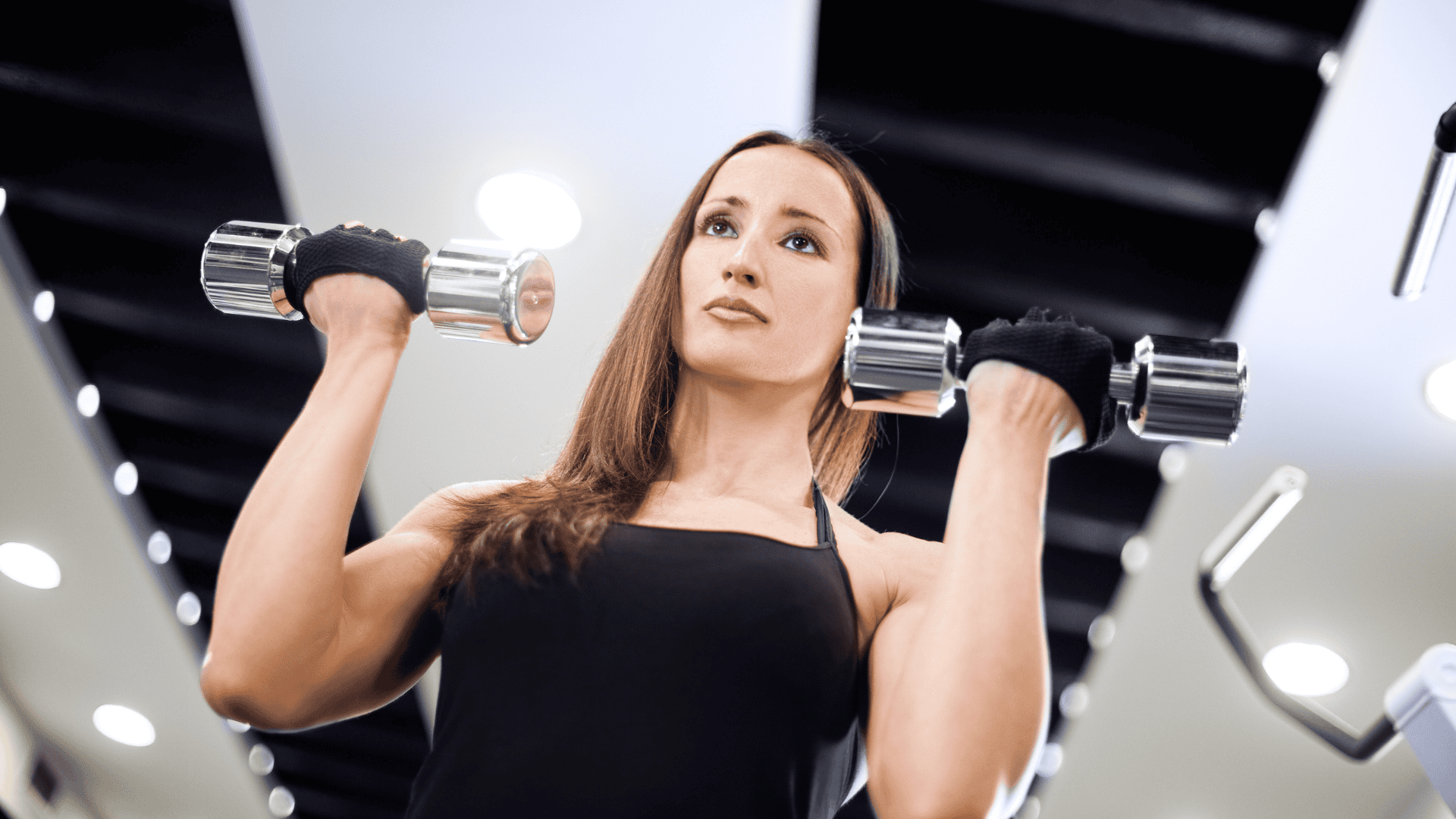
Type: Fast and Focused
Time Needed: About 12–14 minutes
How to do it:
Set a timer. Do each move for 40 seconds, then rest for 20 seconds. Do two full rounds.
- Bicep Curls
- Tricep Kickbacks
- Arm Pulses
- Overhead Tricep Extensions
Why it works:
This one keeps your arms moving the whole time. It’s short, focused, and just the right amount of challenge when your day is packed. You’ll get a solid burn without feeling completely wiped out.
How to Fit Arm Workouts into Your Week
A solid workout plan doesn’t mean doing arm day every single day. In fact, that’s one of the fastest ways to burn out or feel sore in all the wrong ways.
The better move? Mix arm workouts with other light movement, and give yourself proper rest in between. That way, your muscles get a chance to rebuild and your energy actually lasts through the week.
A good starting point is doing arm-focused workouts 2 to 3 times a week. On the other days, you can walk, stretch, or do some lower-body work if you’re mixing things up.
Here’s an easy layout to follow:
| Day | Workout | What It Does |
| Monday | Push & Pull Basics (Workout A) | Builds biceps and triceps evenly |
| Tuesday | Walk, yoga, or full rest | Helps your body recover |
| Wednesday | Arm Workout Without Weights (Workout B) | Trains arms using bodyweight only |
| Thursday | Light movement or stretching | Keeps your joints loose and muscles fresh |
| Friday | Quick Burn (Workout C) | Fast, focused arm workout |
| Saturday | Rest or easy walk | Active recovery or full break |
| Sunday | Optional light arm session or rest | Listen to your energy and adjust as needed |
You can move things around to match your schedule. What matters most is building a routine you can actually stick with.
Also, rest isn’t optional. It’s part of the process. Recovery helps your muscles grow and keeps you from running on empty.
If there’s one thing to remember, it’s this: steady wins. Doing a few short workouts each week and showing up regularly will take you way further than trying to do it all, then stopping when it gets too much.
How Can You Make Your Arm Workouts Even Better?
It’s not just about doing the moves. How you do them matters too. These tips can help you get better results without needing more time.
1. Focus on the muscle you’re working
If you’re doing curls, your biceps should be doing the work not your shoulders or your back. Same goes for triceps during extensions or dips.
Go slow. Stay in control. If you rush through the moves, your muscles don’t get as much out of it (and your joints won’t love you for it either).
2. Do a quick warm-up first
Jumping straight into a workout without warming up is a quick way to feel stiff or get hurt.
Here’s a warm-up you can do in just a few minutes:
- Shoulder rolls – Roll forward 10 times, then backward 10 times
- Arm circles – Hold your arms out to the sides and make small circles (30 seconds forward, 30 seconds backward)
- Light pulses or wall push-ups – Just enough to get blood moving to your arms
It’s tempting to skip it, but your arms will work better (and feel better) if they’re warmed up first.
3. Light weights are totally fine
You don’t need to lift heavy weights to shape your arms.
Good form matters way MORE.
Even bodyweight moves can work, as long as you’re in control. So if 3-pound dumbbells are all you’ve got, that’s enough, as long as you’re moving with intention.
4. Eat some protein after
Your muscles need fuel to rebuild, and that fuel is called protein. No need to overthink it—just add a little to your post-workout meal or snack.
Think: eggs, Greek yogurt, tofu, chicken, or a smoothie with protein powder. (Basically, anything that isn’t just a granola bar and coffee.)
5. That burning feeling? It’s a good thing
If your arms start to feel warm or a little shaky mid-set, that’s normal. That means the muscle is working.
But there’s a difference between a good burn and actual pain. A good burn feels challenging. Sharp pain feels wrong. If it hurts in a weird way, stop.
These tips don’t take a lot of effort, but they do make a big difference. The more you pay attention to form, warm-ups, and recovery, the better your arms will get over time.
Getting Stronger Is More Than Just How You Look
When most people think about working out, they picture the end result. (toned arms, a smaller waist, or looking better in a tank top)
But real progress starts way before any of that shows up.
You’ll notice it in small ways first. A workout that used to leave you exhausted starts to feel manageable. You go from barely finishing your reps to adding a few more without stopping.
You’ll notice it outside of workouts, too:
- You carry all your groceries in one trip (no need to run back to your car).
- Holding your bag or your kid doesn’t make your arms ache.
- Your shoulders don’t round forward as much when you walk.
These are called non-scale wins, and they’re just as important (if not more) than what you see in the mirror.
This isn’t just about shrinking your arms. It’s about making them stronger, steadier, and more useful for the stuff you do every day.
And if you’re just getting started, here’s something to remember: you don’t need to be perfect to make progress. Missing a workout or having an off week doesn’t cancel anything out. What matters is that you come back.
Do that enough times, and real change starts to show up, inside and out.
Frequently Asked Questions
1. Can I tone my arms without weights?
Yes, you can. Moves like wall push-ups, arm pulses, and tricep dips (using a chair or bench) can help tone your arms using just your bodyweight. You don’t need fancy equipment, just a little space and some effort.
2. How often should I do biceps/triceps workouts?
You only need to train your arms 2 to 3 times a week. This gives your muscles time to grow and recover. It’s also okay to do light movements on other days, like walking or morning stretches.
3. Will lifting make my arms bulky?
No, it won’t. Lifting light to medium weights helps build lean muscle, not bulk. Your arms will look more toned and feel stronger, but you won’t suddenly grow big muscles. That takes a whole different level of training and diet.
4. What’s the best time of day to train arms?
The best time is the time that fits your schedule. Some people like to work out in the morning. Others prefer late afternoon or evening. What matters most is picking a time you can stick to.
5. How long until I see results?
Most people start feeling stronger in 2–3 weeks. You might notice you can do more reps, hold a plank longer, or carry things with less strain. Visible changes usually take about 4–6 weeks with steady effort.

